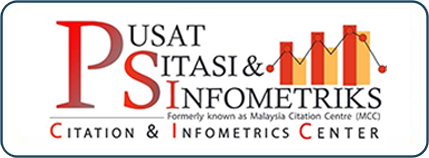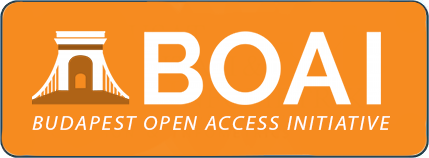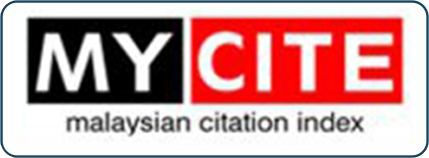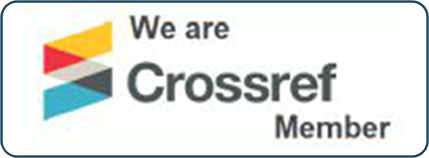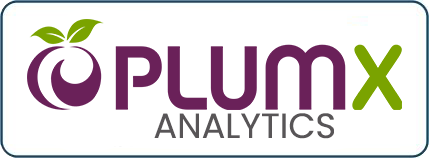Financial Impact on the Accountability of Malaysian State Islamic Religious Councils (SIRC)
DOI:
https://doi.org/10.33102/jmifr.v15i2.175Keywords:
Financial, Impact, Accountability, Disclosure, State Islamic Religious CouncilsAbstract
This paper aims to identify whether Malaysian State Islamic Religious Councils (SIRC) financial characteristics have a significant impact on the accountability of Malaysian State Islamic Religious Councils (SIRC). A content analysis approach was used to examine the extent and quality of disclosure in the annual reports of SIRC, indicating accountability of SIRCs. This paper used the self-developed disclosure index that applies specifically for SIRC. Multiple regression was used to examine the financial determinants of the extent and quality of disclosure. The result of the regression models revealed that the extent and quality of SIRC disclosure is influenced by organisational characteristic, namely size. This study suggests that disclosure in the annual report, in particular the non-financial performance, increases with the amount of zakat collection, thereby demonstrating SIRC’s responsibility. Next, the control variable of accessibility is found to be significantly related to financial statements. Obliged to produce financial statements, SIRC are more likely to disclose more information in the financial statements. This research finding has important implications for regulators, policy makers and top officials in SIRC, by monitoring the quality of disclosure, supporting the notion of public accountability, which appreciates the public’s right to get inform about SIRC. Despite the voluntary disclosure of a non-financial report, SIRC should consider producing a comprehensive annual report for the discharge of their accountability and thus, encourage more funding. They should be more transparent to enhance accessibility, concerning the extent and quality of the disclosure.
Downloads
References
Abdul-Rahman, A. R. & Goddard, A. (1998). An interpretive inquiry of accounting practices in religious organisations. Financial Accountability and Management, 14(3), 183–201.
Archambault, J. J. & Archambault, M. E. (2003). A multinational test of determinants of corporate disclosure. The International Journal of Accounting, 38(2), 173–194.
Alotaibi, K. & Hussainey, K. (2016). Quantity versus quality: The value relevance of CSR disclosure of Saudi Companies. Corporate Ownership & Control Journal, 13(2), 167–179.
Aly, D., Simon, J. & Hussainey, K. (2010). Determinants of corporate internet reporting: evidence from Egypt. Managerial Auditing Journal, 25(2), 182–202.
Amran, A. & Susela Devi, S. (2008). The impact of government and foreign affiliate influence on corporate social reporting. Managerial Auditing Journal, 23(4), 386–404.
Arshad, R., Bakar, N. A., Sakri, F. H. & Omar, N. (2013). Organizational characteristics and disclosure practices of Non-profit Organizations in Malaysia. Asian Social Science, 9(1), 209–217.
Atan, R., Zainon, S., Nam, R. Y. T. & Aliman, S. (2012). Analyzing disclosure practice of religious nonprofit organizations using partial disclosure index. World Academy of Science, Engineering and Technology, 68, 1389–1395.
Atan, R., Zainon, S. & Wah, Y. B. (2013). Empirical evidence of governance and disclosure in charity organizations. Journal of Basic and Applied Scientific Research, 3(1), 533–542.
Bakar, N. B. A., Saleh, Z. & Mohamad, M. H. S. (2011). Enhancing Malaysian public sector transparency and accountability : Lessons and issues. European Journal of Economics, Finance and Administrative Sciences, (31), 133-145.
Bakar, N. B. A. & Saleh, Z. (2011a). Disclosure of accountability information in public sector: The case of Malaysian Federal Statutory Bodies. Paper pesented at the 13th Biennial CIGAR Conference: Bridging public sector and non-profit sector accounting, Ghent.
Bakar, N. B. A. & Saleh, Z. (2011b). Incentives for disclosure of accounting information in public sector : A literature survey. International Research Journal of Finance and Economics, 75(1), 24-38.
Barros, C. P. & Nunes, F. (2007). Governance and CEO pay and performance in non-profit organizations. International Journal of Social Economics, 34(11), 811–827.
Baydoun, N. & Willett, R. (2000). Islamic corporate reports. Abacus, 36(1), 71–90.
Brammer, S. & Millington, A. (2004). The development of corporate charitable contributions in the UK : A stakeholder analysis. Journal of Management Studies, 41(8), 1411–1434.
Brammer, S. & Pavelin, S. (2004). Voluntary social disclosures by large UK companies. Business Ethics: A European Review, 13(July), 86–99.
Broadbent, J. & Guthrie, J. (2008). Public sector to public services: 20 years of “contextual” accounting research. Accounting. Auditing & Accountability Journal, 21(2), 129-169.
Bushman, R. M., Piotroski, J. D. & Smith, A. J. (2004). What determines corporate transparency? Journal of Accounting Resea, 42(2), 207–252.
Callen, J. L., Klein, A. & Tinkelman, D. (2003). Board composition, committees, and organizational efficiency: The case of nonprofits. Nonprofit and Voluntary Sector Quarterly, 32(4), 493–520.
Chakroun, R. & Hussainey, K. (2014). Disclosure quality in Tunisian annual reports. Corporate Ownership and Control, 11(4), 58–75.
Chiu, T.-K. & Wang, Y.-H. (2015). Determinants of social disclosure quality in Taiwan : An application of stakeholder theory. Journal Business Ethics,129(2), 379–398.
Connolly, C. & Hyndman, N. (2003). Performance reporting by UK charities: Approaches, difficulties and current practice. Edinburgh, UK.
Connolly, C. & Hyndman, N. (2004). Performance reporting: a comparative study of British and Irish charities. The British Accounting Review, 36(2), 127–154.
Connolly, C. & Hyndman, N. (2013). Towards charity accountability. Public Management Review, (August 2013), 1–24.
Cooke, T. E. (1998). Regression analysis in Accounting disclosure studies. Accounting and Business Research, 28(3), 209–224.
Coy, D. & Dixon, K. (2004). The public accountability index: Crafting a parametric disclosure index for annual reports. The British Accounting Review, 36(1), 79–106.
Coy, D., Fischer, M. & Gordon, T. (2001). Public accountability: A new paradigm for college and university annual reports. Critical Perspectives on Accounting, 12(1), 1–31.
Debreceny, R., Gray, G. L. & Rahman, A. (2002). The determinants of Internet financial reporting. Journal of Accounting and Public Policy, 21(4–5), 371–394.
Dhanani, A. & Connolly, C. (2012). Discharging not-for-profit accountability: UK charities and public discourse. Accounting, Auditing & Accountability Journal, 25(7), 1140–1169.
Gandía, J. L. & Archidona, M. C. (2008). Determinants of web site information by Spanish city councils. Online Information Review, 32(1), 35–57.
Ghazali, N. A. M. & Weetman, P. (2006). Perpetuating traditional influences: Voluntary disclosure in Malaysia following the economic crisis. Journal of International Accounting, Auditing and Taxation, 15, 226–248.
Gordon, T., Fischer, M., Malone, D. & Tower, G. (2002). A comparative empirical examination of extent of disclosure by private and public colleges and universities in the United States. Journal of Accounting and Public Policy, 21(3), 235–275.
Grosso, A. L. & Van Ryzin, G. G. (2012). How citizens view government performance reporting. Public Performance & Management Review, 35(2), 235–250.
Gujarati, D. N. & Porter, D. (2009). Basic Econometrics. Mc-Graw Hill.
Haniffa, R. M. & Cooke, T. E. (2002). Culture, corporate governance and disclosure in Malaysian corporations. Abacus, 38(3), 317–349.
Haniffa, R. M. & Cooke, T. E. (2005). The impact of culture and governance on corporate social reporting. Journal of Accounting and Public Policy, 24(5), 391–430.
Heijden, H. Van Der. (2013). Small is beautiful? Financial efficiency of small fundraising charities. The British Accounting Review, 45(1), 50–57.
Hussainey, K. & Al-Najjar, B. (2011). Future-oriented narrative reporting: determinants and use. Journal of Applied Accounting Research, 12(2), 123–138.
Hussainey, K., & Al-Nodel, A. (2008). Corporate governance online reporting by Saudi listed companies. Research in Accounting in Emerging Economics, 8, 39–64.
Hussainey, K., Elsayed, M. & Razik, M. A. (2011). Factors affecting corporate social responsibility disclosure in Egypt. Corporate Ownership & Control, 8(4), 315–388.
Hyndman, N. & McDonnell, P. (2009). Governance and charities: An exploration of key themes and the development of a research agenda. Financial Accountability and Management, 25(1), 5–32.
Jaffar, R., Riduan, M. & Abdul, C. (2007). Determinant factors affecting quality of reporting in annual report of Malaysian companies. Malaysian Accounting Review, 6(2), 19–43.
Karaa, A. (2013). Corporate governance and disclosure quality : Taxonomy of Tunisian listed firms using the decision tree method based approach. Journal of Applied Economics and Business Research, 3(2), 95–117.
Lampkin, L. & Raghavan, K. (2008). Organisational characteristics, financial performance measures and funding soures of faith based organisations. Journal of Health and Human Services Administration, 31(3), 332–355.
Laswad, F., Fisher, R. & Oyelere, P. (2005). Determinants of voluntary Internet financial reporting by local government authorities. Journal of Accounting and Public Policy, 24(2), 101–121.
Lindkvist, L. & Llewellyn, S. (2003). Accountability, responsibility and organization. Scandinavian Journal of Management, 19(2), 251–273.
Mahamod, L. H. (2011). Alleviation of rural poverty in Malaysia: the role of zakat, a case study. University of Edinburgh.
Mahamood, S. M. (2000). The administration of waqf, pious endowment in Islam: A critical study of the role of the State Islamic Religious Councils as the sole trustess of awqaf assets and the implementation of istibdal in Malaysia with special reference to the Federal Territory . University of Birmingham.
Marcuccio, M. & Steccolini, I. (2009). Patterns of voluntary extended performance reporting in Italian local authorities. International Journal of Public Sector Management, 22(2), 146–167.
Masruki, R., Khaled Hussainey & Aly, D. (2018). Developing accountability disclosure index for Malaysian State Islamic Religious Councils (SIRCs): Quantity and quality. Journal of Management and Accounting, 17(1), 1-17.
Matsunaga, Y., Yamauchi, N. & Okuyama, N. (2010). What determines the size of the nonprofit sector?: A cross-country analysis of the government failure theory. VOLUNTAS: International Journal of Voluntary and Nonprofit Organizations, 21(2), 180–201.
Miniaoui, H. & Oyelere, P. (2013). Determinants of internet financial reporting practices: Evidence from the UAE. Review of Pacific Basin Financial Markets and Policies, 16(4), 1–25.
Mucciarone, M. A. & Neilson, J. (2011). Performance reporting in the Malaysian government. Asian Academy of Management Journal of Accounting and Finance, 7(2), 35–77.
Muda, M., Marzuki, A. & Shaharuddin, A. (2006). Factors infleuncing individual participation in zakat contribution: Exploratory investigation. Paper presented in the Seminar for Islamic Banking and Finance.
Naser, K. & Nuseibeh, R. (2003). Quality of financial reporting: Evidence from the listed Saudi nonfinancial companies. The International Journal of Accounting, 38(1), 41–69.
Ntim, C. G., Soobaroyen, T. & Broad, M. J. (2016). Governance structures, voluntary disclosures and public accountability: The case of UK Higher Education Institutions. Accounting, Auditing and Accountability Journal, 44.
Odainkey, H. N. & Simpson, S. N. Y. (2013). Ensuring accountability in state-owned enterprises : Examining the role of annual reports from a middle income country’s perspective. The Journal of Institute of Public Enterprise, 36(1&2), 1–20.
Owusu-Ansah, S. (1998). The impact of corporate attributes on the extent of mandatory disclosure and reporting by listed companies in Zimbabwe. International Journal of Accounting, 33(5), 605–531.
Owusu-ansah, S. & Yeoh, J. (2005). The effect of legislation on corporate disclosure practices. ABACUS, 41(1), 92–109.
Ryan, C., Stanley, T. & Nelson, M. (2002). Accountability disclosures by Queensland Local Government Councils: 1997-1999. Financial Accountability & Management, 18(3), 261–289.
Siraj, S. A. (2012). An empirical investigation into the accounting, accountability and effectiveness of waqaf management in the State Islamic Religious Councils (SIRCs) in Malaysia. Cardiff University.
Styles, A. K. & Tennyson, M. (2007). The accessibility of financial reporting of US municipalities on the internet. Journal of Public Budgeting, Accounting and Financial Management, 19(1), 56–92.
Sulaiman, M., Adnan, M. A. & Nor, P. N. S. M. M. (2009). Trust me ! a case study of the International Islamic University Malaysia’s waqf fund. Review of Islamic Economics, 13(1), 69–88.
Wahab, N. A. & Rahman, A. R. A. (2011). Efficiency of zakat institutions and its determinants. Paper presented at the 8th International Conference on Islamic Economics and Finance.
Wallace, R. S. O., Naser, K. & Mora, A. (1994). the relationship between the comprehensiveness of corporate annual reports and firm characteristics in Spain. Accounting and Business Research, 25(97), 41–53.
Zainon, S., Atan, R., Wah, Y. B. & Nam, R. Y. T. (2011). Institutional donors’ expectation of information from the non-profit organizations (NPOs) reporting: A pilot survey. International NGO Journal, 6(8), 170–180.
Downloads
Published
How to Cite
Issue
Section
License
Copyright (c) 2018 Rosnia Masruki, Khaled Hussainey, Doaa Aly

This work is licensed under a Creative Commons Attribution 4.0 International License.


